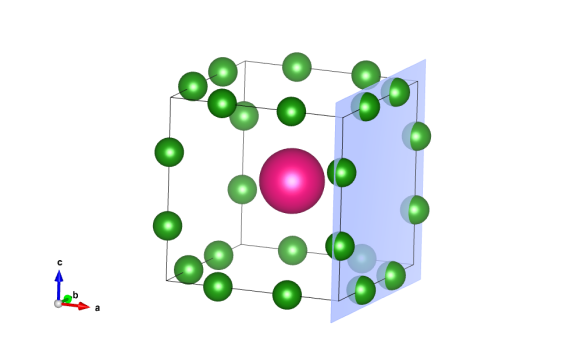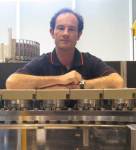SmB6: When interesting is skin deep
What does it look like?

Image generated by the VESTA (Visualisation for Electronic and STructural analysis) software http://jp-minerals.org/vesta/en/
What is it?
Samarium hexaboride is a cubic material. In the diagram, the samarium is the big purply atom at the centre and the borons are on the edge of the cube: we've highlighted one of the faces to show how the borons are arranged.
This material is currently the subject of a lot of research (for example this open access paper) because it's a topological insulator. In this context, topological means this is a really cool word that should get us a lot of grant money. I highly recommend this blog post for an explanation.
There's a saying attributed to Wolfgang Pauli: "God made the bulk; surfaces were invented by the devil". One of the reasons topological insulators are interesting - and the easiest way of describing them - is that the bulk and surface properties are different. They are electrically insulating in the bulk but electrically conducting on the surface.
Apart from being interesting in their own right - and demonstrating that, once again, condensed matter physicists will find a way to keep busy - it's strongly suspected that topological insulators could be really useful in fields such as quantum computing.
Where does the structure come from?
This structure is #2104762 in the Crystallography Open Database. The reference is Funahashi et al., Acta Cryst. B, 66 (2010) 292.
Typical recent research: W. A. Whelan et al., Phys. Rev. X, 4 (2014) 031012.
A reference to topological insulators: Hasan and Kane, Rev. Mod. Phys. 82 (2010) 3045. Even if you don't know much about topology you know it's got to do with holes and donuts and stuff. This paper distinguishes itself by illustrating a torus using a photograph of a genuine bona fide donut. Complete with icing sugar. I wonder how they got that through faculty? "We'd like to stump up the page charge for a colour print so that we can put a picture of a donut in our paper".






